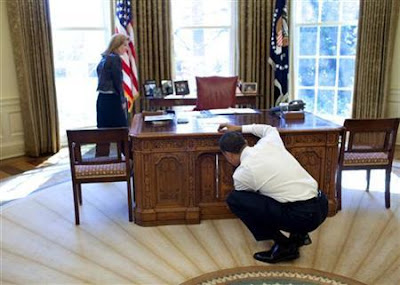
Rene Verdon, a French-born chef who brought an air of continental sophistication to the White House under the Kennedys, and then left his post after a clash with the Johnson administration over frozen vegetables and garbanzo beans, died Feb. 2 at his home in San Francisco of undisclosed causes. He was 86.
Mr. Verdon, who later ran an acclaimed San Francisco restaurant and won admirers including Julia Child and Jacques Pepin, was perhaps most renowned for his five-year tenure at the White House.
When he arrived at the executive mansion in spring 1961, he took over a kitchen that had long been run by caterers and Navy stewards and not known for producing fine food.
That changed under Mr. Verdon - a "culinary genius," The Washington Post said, with refined tastes admired by Jacqueline Kennedy.
A veteran of some of Paris's best restaurants, Mr. Verdon championed seasonal, local food long before it became fashionable. He grew vegetables on the White House roof and herbs in the East Garden.
"I cooked everything fresh," he told the New York Times in 2009. "If the ingredients are superb, then the cooking can be, and must be, simple."
In April 1961, his White House debut - a luncheon for British Prime Minister Harold Macmillan - made the front page of the New York Times.
Mr. Verdon served trout cooked in Chablis, roast fillet of beef au jus and artichoke bottoms Beaucaire. Dessert was a vacherin, or meringue shell, filled with raspberries and chocolate ice cream.
"The verdict after the luncheon," wrote the Times's Craig Claiborne, "was that there was nothing like French cooking to promote good Anglo-American relations."
Media coverage of Mr. Verdon's menus helped burnish the Kennedys' reputation as tastemakers and spurred home cooks across the United States to begin investigating French cuisine. When the classic "Mastering the Art of French Cooking," cowritten by Child, appeared in 1961, a wave of Francophile homemakers began turning out souffles, pates and pork rillettes.
Mr. Verdon continued working at the White House for more than two years after President Kennedy was assassinated in 1963, but tastes were decidedly different under Lyndon and Lady Bird Johnson - "more South," Mr. Verdon once said.
The Kennedys had asked for quenelles de brochet and mousse of sole with lobster. The Johnsons wanted barbecue, spoonbread and chili.
"You can eat at home what you want, but you do not serve barbecued spareribs at a banquet with the ladies in white gloves," he told The Post.
In 1965, the Johnsons hired a Texan "food coordinator" to cut costs. Her bargain-hunting brought frozen and canned vegetables to 1600 Pennsylvania Ave., a change Mr. Verdon couldn't stomach.
"I don't think you can economize on food in the White House," he said. Plus, "I don't want to lose my reputation."
He resigned at the end of the year "in a Gallic huff," according to Time magazine, after he was asked to prepare a cold puree of garbanzo beans - a dish he described as "already bad hot."
Rene Verdon was born June 29, 1924, in the village of Pouzauges on France's west coast, where his parents owned a bakery and pastry shop.
He grew up helping his father deliver bread and apprenticed to a chef at a hotel in Nantes. From there, he went to Paris, where he worked in restaurants such as the Berkeley before moving to the United States in the late 1950s.
He was working as an assistant chef at the Carlyle Hotel in New York, where the Kennedys had a penthouse, when John F. Kennedy was elected president.
After leaving the White House, Mr. Verdon spent several years hawking electric kitchen appliances and then settled in San Francisco. He wrote several books, including "The White House Chef Cookbook" (1968) and "The Enlightened Cuisine" (1985).
In 1972, he started Le Trianon, a French restaurant hailed in the Times for its "Old-World charm."
Survivors include his wife, Yvette, a former House of Chanel director who ran the front of the house at Le Trianon.
Mr. Verdon presided over several state dinners, but his favorite, he said, was held in 1961 at Mount Vernon - George Washington's estate on the banks of the Potomac River - in honor of the president of Pakistan.
The mansion had neither a kitchen for Mr. Verdon nor modern toilets for the 132 guests who arrived by boat. And Mount Vernon's swampy grounds were thick with mosquitoes.
Mr. Verdon prepared a simple meal at the White House - an appetizer of avocado and crabmeat followed by chicken casserole - that was trucked 16 miles to Mount Vernon. When he saw Park Service employees spraying insecticide to battle the bugs, he threatened to quit.
"I'm not going to be responsible," he cried, "for the number of deaths from DDT!"
He was calmed after Secret Service officers taste-tested several dishes. Guests ate under a tent and listened to the National Symphony Orchestra, and the night was pronounced a triumph.
"Onlookers have speculated as to what marks the end of the Kennedy era," read a 1965 editorial in The Post. "The resignation that truly signals the end of the Kennedy era is that of Chef Rene Verdon."



















